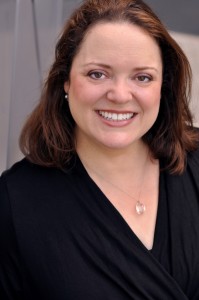March is Women’s History Month and next week about 300 North Texas women will celebrate by singing.
Melinda Imthurn is the Artistic Director of the Women’s Chorus of Dallas, which is organizing the fifth annual Voices of Women Concert. It will also feature choruses from Texas Woman’s University, UNT and the Dallas and Flower Mound school districts.
In State of the Arts, Imthurn talked to me about the power of raising your voice.
There are over 100 women in the chorus. Why do your members join?
MI It’s a very fulfilling experience. It is a way to express things that are important. It’s a sisterhood, a way to connect with other people who share something that they love. One of my members described it as her church. Monday nights are her church, which I thought was very profound and I feel that way in a lot of ways.
There are going to be three female conductors during the program. Explain the significance of that.
MI It’s important that we have three women conductors on the stage. It’s important that our program is almost all female composers. It’s just we’re under represented. There is one major symphony in the United States with a woman conductor currently. You might see [more women] in choral music, but yeah we’re not there on the podiums. So let’s bring it to the light.
“Voices of Women” is Thursday at Moody Performance Hall.
Details. One of the composers whose work you will be performing is Rosephanye Powell. Tell me about her.
MI After the first year of
Voices of Women, where I was primarily dealing with works from major publishers, I realized the group of women composers that we had on the concert wasn’t particularly a diverse group of women. Let me look for diverse women composers. And I have no idea how I had not heard of Rosephanye Powell, because she was published. I just, for some reason, had not come across her work, and it is fantastic. So we have, for many years, done her
“Still I Rise,” as the closer to that concert. We’ve opted not to do that this year, but the Women’s Chorus of Dallas is doing a gorgeous work of hers called
“I Want To Die While You Love Me,” and it is spectacular.
You’re also doing an arrangement of a piece by a hip hop artist named Dessa.
MI Oh, this is so exciting. So Dessa is
—Hamilton fans will know her from
the Hamilton Mixtape, which is the first time that I had heard her.
How do you adapt a hip hop song for a 100-women chorus?
MI The arranger,
Jocelyn Hagen, made the choice often to put the instrumental parts into a vocal part. So the voice might imitate
—or sing
—the part that was played by the cello or the violin.

Melinda Imthurn.
Your upcoming performance is celebrating Women’s History month. Is there a message that you’re trying to get across with your program?
MI The message is
—this word may be overused
—but it is empowerment. Something that
Joni Jensen, conductor of the Texas Woman’s University choir—and I share is this idea the singers should really connect to their full sound when they sing. And I think that’s something that’s often absent in women’s choral music. And I don’t know why, but for some reason, the tone tends to be kind of the same as maybe the women sounded when they were much younger. It’s a very pure, light tone.
Grown women don’t always naturally sound that way. So, I like to explore the full diversity of the tones that women’s voices can communicate.
When did you start singing?
MI My story’s a little bit weird. I loved music, took piano lessons as a kid because I thought I might play in the band. But I happened to be out sick the day the band directors came to school, and that was so fortuitous for me because I thought, “Well, let me sing in the choir.” And so I sang in the choir for a while, and it was all right. And at some point, a choir director said, “It’s time for us to hear you individually.” And I was terrified. He played a little and I sang a little, and he kind of sat back and said, “You’re not an alto; you’re a soprano!” And all of a sudden, I’m singing a different part. I thought, “Oh, this is my voice. Okay, this is how I’m supposed to sound.” It was profound for me.











